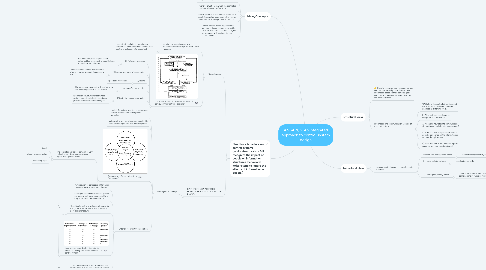
1. structural view
1.1. It fails to recognize that managers do not respond mechanically since they process information based on their personal goals and not the organizational goals imbedded in a control system.
1.2. information and communication aspects of a control system
1.2.1. (1) What are the controlled variables and how are they to be broken down and measured at different levels?
1.2.2. (2) What disturbances should be recognized and measured?
1.2.3. (3) When and how often to communicate information on deviations to management?
1.2.4. (4) What and how many transformations are to be performed on the information as it moves through a network?
1.2.5. (5) What and how often feedback reports should be provided to subordinates?
2. behavioral view
2.1. emphasis on the human and social aspects of control
2.1.1. (I) Traditional management phase
2.1.1.1. the best management style
2.1.2. (2) Human relations phase.
2.1.2.1. best leadership style.
2.1.3. (3) Contingency theory phase.
2.1.3.1. circumstances under which certain combinations of variables work best.
2.1.3.1.1. expectancy model
3. Ideas/Concepts
3.1. information and human-social variables are really interacting subsystems.
3.2. Control: situations in which the controlled variable is human performance.
3.3. control system will be assumed to require a set of structural arrangements which allows the human behavioral process to function.
3.4. Control system “those organizational arrangements and actions designed to facilitate its members to achieve higher performance with least unintended consequences”.
4. Need for a broader view of control systems (While structuralists fail to recognize the impact of people on information structures, behavioral writers tend to ignore the effects of information on people.)
4.1. Closed system
4.1.1. certainty by assuming one-way dependence relationships between these variables.
4.1.1.1. recognize the relationships between information and behavior still tend to treat control in a closed systems context.
4.1.2. characteristics of information structures are particularly relevant for a designer:
4.1.2.1. (1) Nature of measures
4.1.2.1.1. the more complete, objective and influencable a measure, the more likely it is to motivate subordinates.
4.1.2.2. (2) source and order of presentation
4.1.2.2.1. Credible sources tend to be used more often and have a greater influence on a user.
4.1.2.3. (3) timing
4.1.2.3.1. speed and frequency
4.1.2.4. (4) route for transmission
4.1.2.4.1. The sender and the receiver, therefore, may not be sharing the same information.
4.1.2.5. (5) extent of shared information
4.1.2.5.1. information structures reflect what a designer perceives to be the needs and goals of subordinates and managers.
4.2. OPEN SYSTEMS (A PROPOSED FRAMEWORK FOR CONTROL SYSTEM DESIGN)
4.2.1. open systems concept
4.2.1.1. treats information, people and technology as both independent and dependent variables.
4.2.1.2. technological and social systems were highly interactive components of a control system.
4.2.1.3. Components of a control system (boundaries)
4.2.1.3.1. The controlled variable is sometimes very difficult to pin down as one moves to higher management levels.
4.2.1.4. Criterion for effective integration
4.2.1.4.1. minimization of perceptual differences between managers and subordinates.
4.2.1.4.2. a designer should choose those system elements which lower the possibility of cognitive conflict between the two.
4.2.1.4.3. The ultimate test of any design, of course, is the system’s performance. It is, however, a post-design measure.
4.2.1.4.4. the manager-subordinate interaction is viewed as the key to the effectiveness of a control system.
4.2.1.4.5. contribution here is the appreciation for the key role cognitive processes play in a control system’s efforts to achieve regulation.
